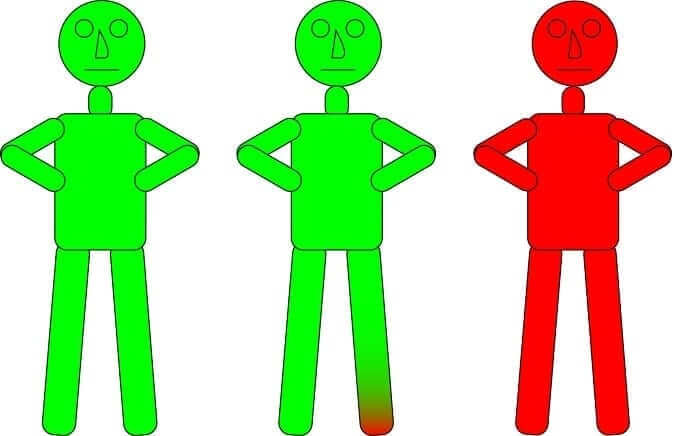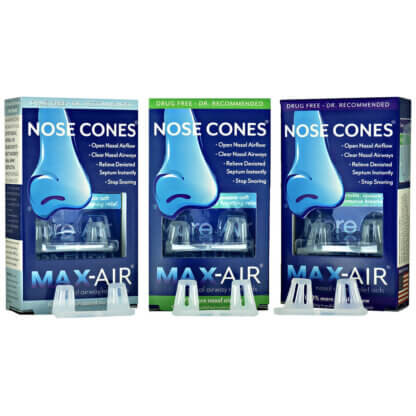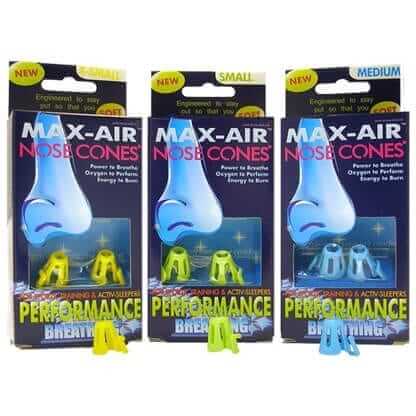CALL: 1-800-797-0361 (M-F 8AM-6PM EST)
“Just wanted to say thank you for a wonderful product. I have developed a horrible snoring problem that has disturbed my and my husband’s sleep for the past year. We live in the country and my husband has accused me of scaring all the “wildlife” away with my snoring and doesn’t even worry about locking the doors at night because he feels if a “burglar” were to walk inside our house my snoring would scare them off as they would assume a “lumberjack” lived there!!! He thinks he’s very funny but I have not appreciated the jokes as I consider myself a “lady”!!!
Sandy W. CA
I feel like I get a much better night’s sleep and my husband absolutely sleeps better as well! Thank you for a wonderful product!!! “
Thanks Sandy! Glad that the Nose Cones stopped your snoring and are helping you both sleep well.

There are lots of jokes about snoring. And it can be funny, as long as you can stop snoring whenever you want.
Snoring is so common that everyone thinks it’s normal. However, snoring is not normal.
According to the National Sleep Foundation 90 million adults snore and 37 million of them are habitual snorers (meaning that they snore every night).
That seems like a lot of adults, doesn’t it. If you are wondering what percent of the population snore occasionally and snore habitually, here’s what we found. The US Census reports that there are 237 million adults over the age of 21 in the USA.
How Many Adults in the USA Snore? – One out of every three adults in the USA snores.
Statistics show that 90 million adults snore. That is equivalent to 38% of the adult population; or a little more than one out of every three adults.

Statistics also show that 37 million of those adults snore every night. That is 15.6% of the adult population or almost one out of every six people. Chances are that many of the people that you see on a daily basis share a problem with snoring.
Even though snoring is common, it is not normal. Current research shows that snoring is bad for your health, as well as your sleep.
Snoring is an indication that you have an airway disorder.
An airway disorder is defined by obstruction of the nasal airway and oral airway. Obstruction of the nasal airways includes septal deviation, nasal sidewall collapse, turbinate hypertrophy, chronic sinus infections, nasal allergy congestion, or a combination of these problems. The nasal airway has no moving parts, so obstruction is due to abnormal inflammation of the nasal mucosa, or the anatomical structure.
Obstruction of the oral airway is a bit more complicated. Unlike the nasal airway (which has no moving parts), the oral airway contains many moving parts: the tongue, the uvula, the soft palate, and the epiglottis. All of these moving parts of the oral airway are 1) designed to move, and 2) are normal. The moving parts of the oral airway enable us to speak and to consume food and beverages.
Breathing through the mouth during sleep causes snoring.
Snoring is the sound created when the nasal and oral airways restrict breathing airflow. The greater the airflow restriction, the louder the sound of snoring. The sound is caused by loose tissue in the back of the throat vibrating as a consequence of the airflow being restricted.
The airflow from inhaled breath vibrates all the soft tissue and moving parts of the oral airway. The vibration of these body parts causes the noise that we associate with snoring. It is the same concept as playing a flute or saxophone, the reed in the instrument vibrates and creates the sound. It would be nice if the vibration caused by mouth-breathing played a nice tune.
To stop snoring, you have to reduce nasal and oral airflow restrictions.
The nose is the primary airway, and is the “gateway” to the entire airway. So to stop snoring, the nose must be high-functioning. That is where the Max-Air Nose Cones and Sinus Cones come in. They enable the nose to be high-functioning, despite nasal obstruction.
By simply inserting the soft, Nose Cones or Sinus Cones into your nasal airway during sleep, you’re on your way to better breathing, better sleep and the end of snoring.
Insert, inhale fully and sleep with your mouth closed and a smile on your face.





